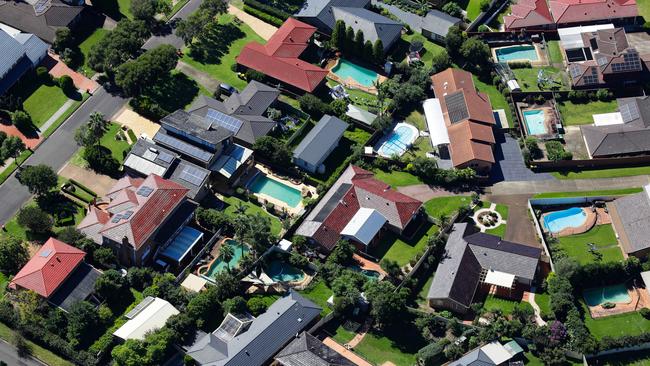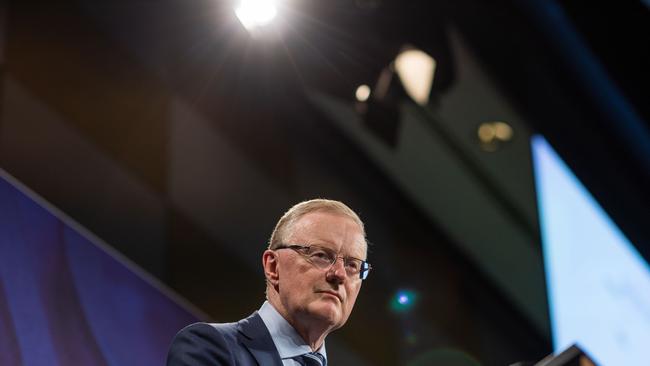
Even with National Australia Bank delivering at the top line, big investors rushed to the door at the fastest rate in more than a year with signs the banking boom has spluttered out before it barely had a chance to begin.
Deep inside NAB’s first-half accounts was confirmation that the furious competition on the mortgage side is now rapidly catching up to deposits, and this means that profit margins are being squeezed at both ends.
Mortgage holders faced with higher interest rates will have little sympathy for the rebasing of bank profit margins. But for the good borrowers this is an ideal time to chase a better rate – banks are throwing money at people wanting to refinance a new loan.
Macquarie Group has regularly been named as leading the charge for growth in the mortgage book with competition rising from February, while ANZ and Westpac are also fighting hard for a slice of the action. ANZ’s profit figures released earlier Friday also showed its net interest margin falling well short of expectations.

The unwinding of Covid-19 is also playing out on the deposit side, with banks themselves needing to refinance tens of billions in cheap funds they borrowed from the Reserve Bank during the pandemic. Added to this are strains in global money markets, with thousands of global banks simultaneously looking to refinance loans just as a banking crisis is unfolding in the US. All this means local savers are a better bet to fund lending books even though they are being forced to pay up for the deposits.
NAB is regularly the first of the major banks, with a March balance, date to deliver interim results, which means it gets to set the tone for the rest of the sector. Worries about softer profits from here sent its shares off 7.5 per cent at one stage on Thursday, but they later settled down 6.4 per cent. Westpac reveals its interim results next week and was whacked more than 4 per cent, while ANZ and Commonwealth Bank were also caught in the downslide.
NAB chief executive Ross McEwan has seen the cycle before but his focus is on keeping the bank safe, sound and profitable while sitting out of the more the irrational end of the mortgage and deposit market. Even so, that stand comes at a cost to earnings and sales momentum.
“We’re thinking long term,” McEwan tells The Australian. “The next six months will be what will be. We’ll be focusing the bank on the next two to three years from a strategic perspective. That’s what we have to do.”
Lender’s ‘7000 calls’
As surging interest rates start to slow the economy, McEwan is keeping an even closer watch on his home loan customers than normal.
Borrowers coming under most scrutiny are those who took out a loan between August 2019 and July 2022, when official cash rates were rock bottom and fixed loans were equally cheap.

Now, with official cash rates surging to 3.85 per cent, there are finally signs of repayment stress in some pockets of the bank’s mortgage book. But McEwan emphasises this is only at the very edges, with customers on the whole in a strong position.
With interest rates moving up so fast and broader cost-of-living pressures biting households, everyone is looking for the first cracks in the mortgage market.
The bank has got on the front foot and in recent months reached out to 7000 customers it expects were the most vulnerable to repayment problems, particularly as they have rolled over from a fixed-rate mortgage to a much higher variable interest rate.
“Of those 7000, only 13 have said ‘yes, we’d like some help’. So I think it’s showing resilience in the marketplace and showing full employment is really helping,” McEwan says.
There’s three “buckets” that all banks watch for mortgage stress. These are 30 days of missed payments and then 60 days. Finally, it moves to 90 days. After that, the loan will be classed as bad debt and sent to the impairment ward.
Handing down his first-half accounts, McEwan says there’s been a small increase in the 30-day and 60-day buckets, where people miss the first payment but then smaller numbers the second.

However, he says the lift is not flowing through into the 90-day yet, with this figure remaining stable over the past six months. This means “our customers are finding their way back to payments,” McEwan says.
“We’re not seeing a major, major problem at this point, but we have a watchful eye.”
Some 20 per cent of his “at risk” mortgage customers’ high loan-to-valuation ratios that are coming up to the end of their fixed loan are likely have a tough time refinancing with other banks, given the focus on risk, McEwan says. But it was still incumbent on banks to look after these vulnerable customers through the refinancing process. The same people nearly always end up becoming lower-risk borrowers as they pay down their loan over time, he says.
“Banks need to be fair with customers. If they don’t, as soon as the customer gets the opportunity to leave – they will.”
McEwan says inflation looks to have peaked, but there remains uncertainty in the outlook. He expects Australia to avoid a “pronounced economic correction”.
“The message here is that it’s likely to feel harder over the next six to nine months, but the Australian economy is proving resilient,” McEwan says. He is cautiously optimistic about the recovery through the other side.
Margin hit
NAB posted a 12.3 per cent jump in first-half 2023 cash earnings to a record $4.07bn with dividends being boosted. The numbers show that for the first time in years each of NAB’s operating arms delivered double-digit profit growth, and significantly there are none of the trademark one-off surprises that have tended to follow NAB.
Its flagship business and private bank saw profits up 14.8 per cent, New Zealand (up 11 per cent), the retail bank (up 10.1 per cent) and its volatile corporate and institutional bank (up 20.1 per cent).
McEwan acknowledges that higher interest rates are helping to boost performance, but earnings have been backed by maintaining a focus on profitable business.
His bankers are making “deliberate choices” about where to invest funds and where to pull back. Much of the lending momentum is going in business banking, while running slow in home lending, where competition means some new loans are being written well below the cost of capital. This means he hasn’t been as active on the round of cashback offers, with some banks offering as much as $5000 to sign up to a new loan. In total, NAB’s home lending growth fell to 0.6 times the market growth in the first half.
NAB’s net interest margin of 1.77 per cent came in below what the market expected, amid warnings of more pressure to come.
McEwan’s trademark caution has also resurfaced, with the 83c-a-share interim dividend falling below the ratio NAB has used over the longer term to determine dividend payments. However, he says he wants to keep more funds on the balance sheet to protect against the coming economic slowdown later this year.
johnstone@theaustralian.com.au







Record profits, rising dividends, healthy balance sheets and still freakishly low lending losses should point to everything going right for Australian banks at the moment.